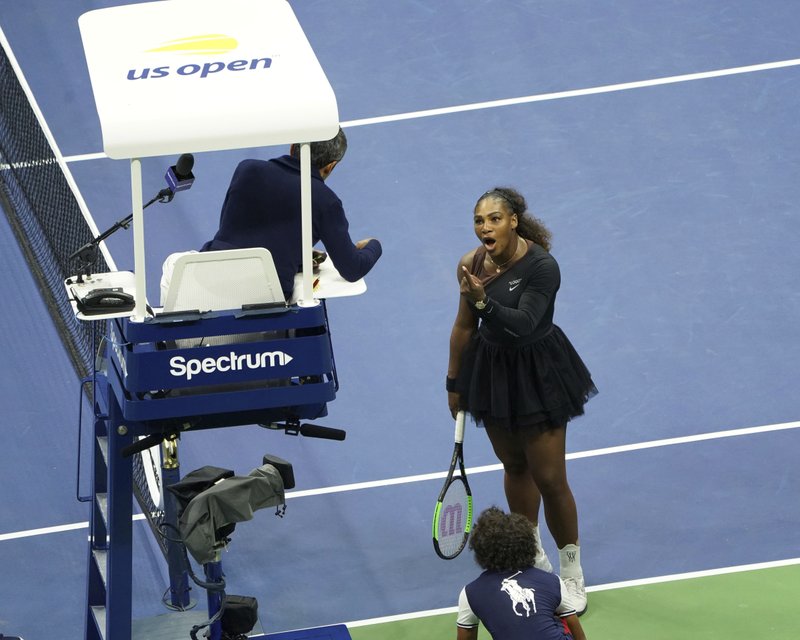WTA calls for equal treatment of players, on-court coaching

Serena Williams argues with the chair umpire during a match against Naomi Osaka, of Japan, during the women’s finals of the U.S. Open tennis tournament at the USTA Billie Jean King National Tennis Center, Saturday, Sept. 8, 2018, in New York. (Photo by Greg Allen/Invision/AP)
NEW YORK — The WTA is calling for equal treatment of all tennis players and coaching to be allowed across the sport in the aftermath of the U.S. Open final.
Serena Williams was given three code violations by chair umpire Carlos Ramos in her 6-2, 6-4 loss to Naomi Osaka on Saturday, and Williams and critics inside and outside of tennis argued that she wasn’t treated the same as some male players.
Article continues after this advertisementThe women’s pro tour agreed.
“The WTA believes that there should be no difference in the standards of tolerance provided to the emotions expressed by men vs. women and is committed to working with the sport to ensure that all players are treated the same. We do not believe that this was done last night,” CEO Steve Simon said in a statement.
Men’s champion Novak Djokovic said he thought Ramos should not have pushed Williams so hard.
Article continues after this advertisement“Just maybe changed — not maybe, but he did change the course of the match,” Djokovic said. “Was, in my opinion, maybe unnecessary. We all go through our emotions, especially when you’re fighting for a Grand Slam trophy.”
But he disagreed with Simon that men and women are treated differently.
“I don’t see things as Mr. Simon does. I really don’t,” Djokovic said. “I think men and women are, you know, treated in this way or the other way depending on the situation. It’s hard to generalize things, really. I don’t see it’s necessary really to debate that.”
The first violation given to Williams was for coaching, which isn’t allowed during any men’s matches but is permitted on the women’s tour except in Grand Slam tournaments.
Though Williams said she follows the rules and never receives coaching during a match, coach Patrick Mouratoglou acknowledged that he does it and says it’s well known throughout the sport that all coaches do.
“We also think the issue of coaching needs to be addressed and should be allowed across the sport,” Simon said. “The WTA supports coaching through its on-court coaching rule, but further review is needed.”